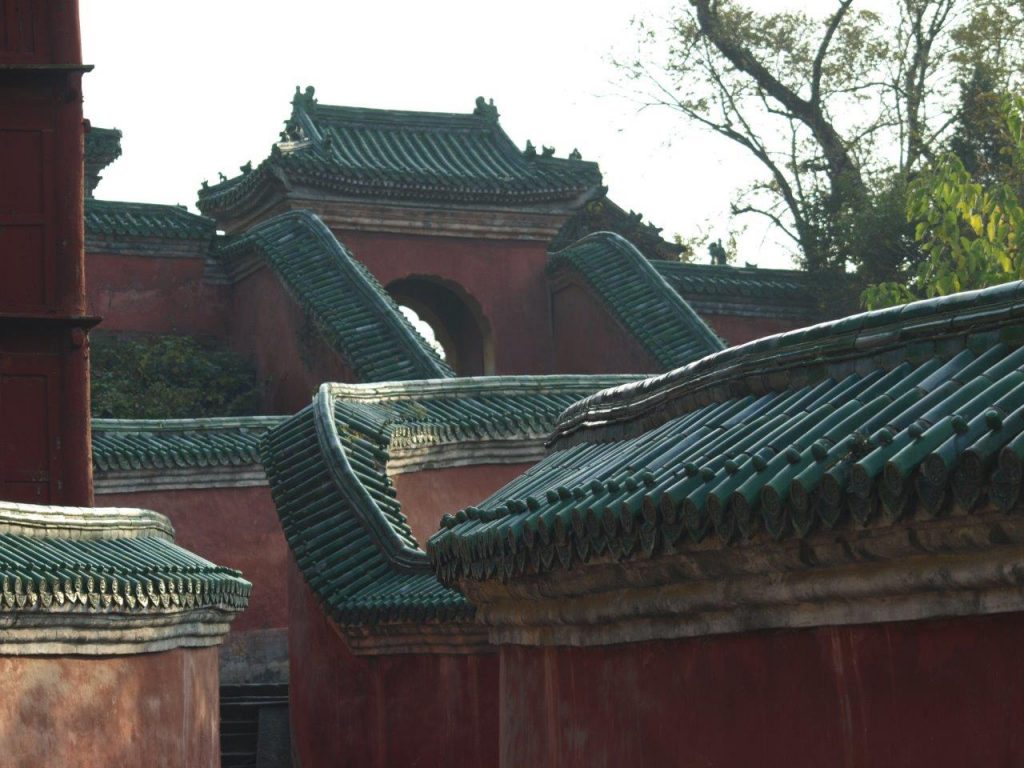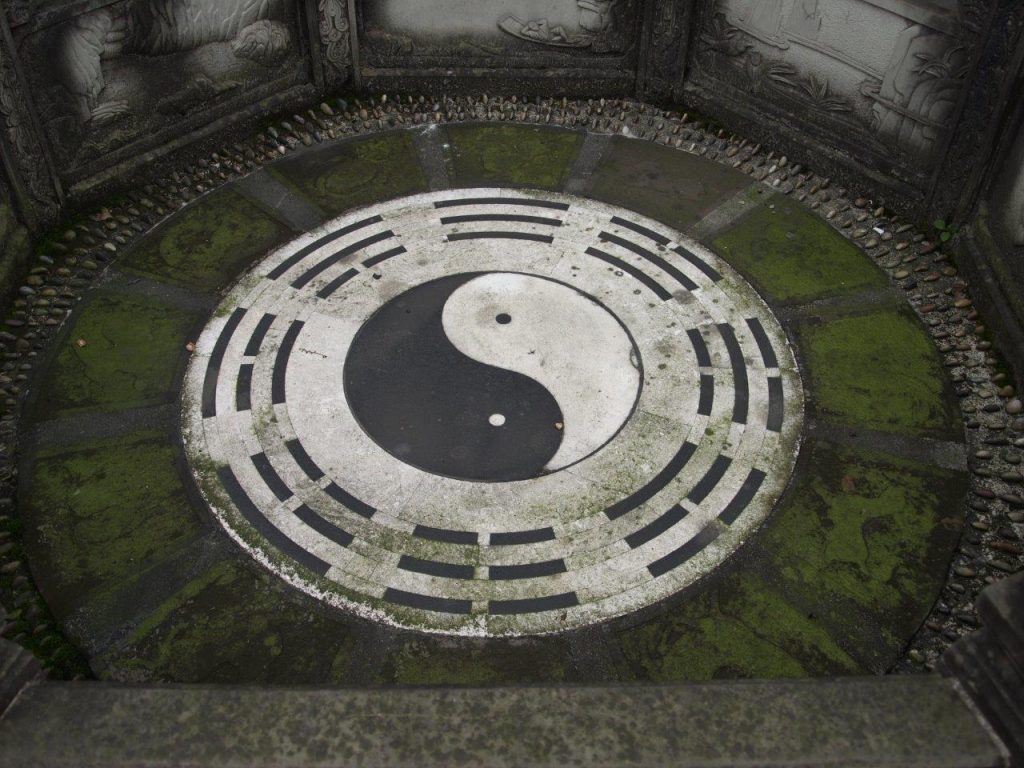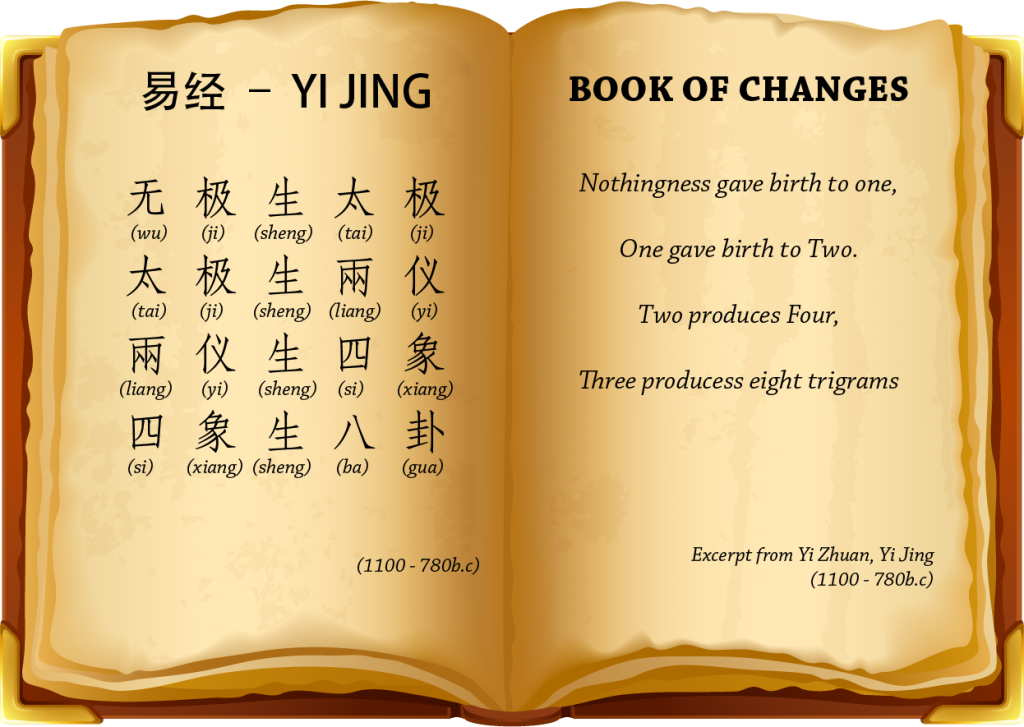
TAI JI QUAN
Like most of Chinese martial arts, trying to establish and determine the genesis of Tai Ji Quan is yet another challenge. Although there are numerous different accounts and claims about its creation it is very difficult to conclude the authenticity and accuracy of available records. Considering the difficulties of translation from Chinese, the style of writing and understanding the meaning of the writing in the same way as when it was written, and trying recognize the difference between the fact and a legend are just some of the problems that we face to establish for certain and concrete supported evidence. So it seems, that the truth is still a mystery which remains to this day. However, despite the scarcity and different various interpretations about its creation, everyone agrees that Wudangshan is the home of Tai Ji Quan (Picture on the right).
Wudangshan, or Wudang mountain is situated in Hebei province in central China embracing an area of two hundred square kilometres which represents Heaven and Earth that exudes with serenity of seventy-two beautiful scenery peaks spreading across this boundless range of mountains.

Wudangshan certainly does not come as a coincidence that this location was a perfect choice to be the birthplace of Tai Ji Quan. Remote and serene place detached from earthly matters creates an Ideal place for meditation, observation the nature, practicing martial arts, studying and practicing Chinese medicine and philosophy of Daoism.

A life style and a life time pursuit to living in the harmony with the nature has been always what Tai Ji Quan differentiated from other martial arts. It is rather universal paradigm and practice how human life should be harmonised with all different aspect of the life rather than a singular direction of one discipline, whether we talk about philosophical aspect, martial, ethical or any other. Understanding this to be the essence of Tai Ji, it is impossible to approach partially as it would lose its real value and meaning. In addition to this, it would be very disrespectful to ignore already a bestowed and pure equilibrium for us to live in and at the same time to be part of it. Therefore, we shall strive to continue to nourish this way of life and continue fulfilling our duty towards the nature and the universe.
HISTORY
Although it is said that Tai Ji Quan history starts with a legendary monk Zhang Sanfeng there is more than sufficient evidence showing that its roots go back as far as 2.500BC as Paul Unshuld postulates in his book “Medicine in China” History of Ideas, after his extensive research on medicine in China and benefits of physical exercises on health, where he finds first evidence of Qi Gong practice. Most likely those exercises and movements were not the same as what we know nowadays, which were shaped during the flourishing Ming dynasty from 1460 – 1730AD, but the systematic approach had already been well established and practiced as we shall see later. Certainly, and definitely most solid evidence of the existence of such exercises can be found in the book “Huang Di Nei Jing Su Wen” or “Cannons of the Yellow Emperor” written around 300-400BC. during the Warring states period. From this remarkable book or “The Bible of Chinese Medicine”, we learned that already at that time the whole system of Chinese Medicine, Qi Gong, Daoism philosophy, importance of diet and regular exercising were all established and well practiced. Perhaps later evidence and written records come from the famous and respected physician Hua Tou (c.140-208AD.), who maintained and explains the importance of physical exercises for the health benefits as he himself was a Tai Ji Quan practitioner.
TAI JI QUAN DOCTRINE
It is fascinating to observe that such a complex and all-embracing system was discovered and understood so far back, and therefore, before we start talking about Tai Ju Quan it would be more appropriate to explain and decipher the name “Tai Ji Quan”.
Despite its translation as “Ultimate Supreme” Tai Ji is clearly one of those terms which remain its original name, and therefore we shall try to understand as it is, and explain rather than translate. Tai Ji is rather a paradigm (as we know like Yin Yang, picture on the right and below) that goes back as we explained earlier, as far as five thousand years back or more. This fundamental concept of Tai Ji is mentioned in the book “Yi Jing” or “Book of Changes”, which was written between 1100BC. and 780BC. during the Western Zhou dynasty. Its author Zhou Wen who was a famous and reputable physician at the time, explains in this book universal system of natural laws and occurrences in the universe, their relations, interconnectedness, interdependences, etc. Yi jing is one of the earliest books ever written and undoubtable one of the most precious books and reference from the earliest civilisations of the human history.


Moving forward and desiphering Tai Ji Quan and its developments, we can recognize many obstacles and chalenges in defining the source of origins, but one thing we can say for certain that eversince the Tai Ji Quan has existed it has always been deeply rooted and embeded in the very essence of Chinese philosophy and the life style from the earliest developments.
Perhaps this might be the main reason why Tai Ji Quan is still one of the most popular martial arts and a life style, just because it is a part of us and the universe and always lives amongst us and leads us. Thefefore, we shall strive to continue nourishing this wonderful way of life, let ourselves to be giuded with its principles, and practice its benevolence as the rudimental value. That is the way to show respect and gratitude to this life we are living, and our contribution to its fascinating and at the same time mystifying existance.
Bibliography
Celestial Lancets – Lu Gwei-Djen and Joseph Needham, 1980,
Medicine in China, A history of Ideas – Paul U. Unshuld, 1985
The Complete I Ching – Master Alfred Huang, 2010
The Yellow Emperor’s Classic of Medicine – Maoshing Ni, 1995



